The Path to IT Modernization in Insurance

In today’s fast-paced environment, digital transformation has become a necessity rather than an option. This also holds true for the insurance industry, which heavily depends on specialized technologies to provide superior customer experiences. However, a large chunk of the industry still relies on legacy applications, resulting in increased friction and operational inefficiencies, negatively impacting business agility and innovation. This can only change if IT capabilities undergo a fundamental transformation. C-level executives must focus on augmenting traditional IT insurance operations with disruptive technologies, to help the industry move beyond legacy applications and ride the booming wave of insurtech.
To fully capitalize on the advantages of digitalization, simply improving the front end of the insurance value chain is insufficient. Insurers must have real-time data access and develop agile features in their core systems. This necessitates a significant revamp of their core systems and a transformation of their business model. There are three paths that insurance companies can take to achieve this:
- Modernizing their legacy IT platform
- Developing a new proprietary platform
- Purchasing a standard software package
The Three Approaches to Modernization
- IT Platform Modernization
This method is suitable for insurance companies with legacy IT platforms with adequate functional capabilities but are almost at the end of their technological lifespan and thus need more modernization options. One option is “refactoring” which restructures the internal framework of a system while retaining its functionality. Modernizing a legacy system involving a refactoring method might involve 1:1 code migration.
This process allows insurers to upgrade to modern technology while at the same time preserving unique features that are tailored to their specific business requirements. Moreover, since there is no need for a significant change in the business model, customers and insurers are the least affected. Further, functionalities can be enhanced in the future.
However, legacy platform modernization has some drawbacks. If not planned properly, it can result in significant drawbacks such as increased costs, complex processes, and prolonged timelines. Furthermore, code migration may result in missed opportunities for integrating modern systems and reinforcing data architecture to meet digital requirements. This is because code transversion, in some cases, cannot be automated as planned initially, and the refactored code’s structure needs to possess the architectural advantages of modern programming languages. Additionally, making any future changes to the code will likely require a great deal of time and complexity.
- Creating a Proprietary Platform
For insurance companies that don’t typically rely on a legacy system or if their legacy system is beyond any type of modernization, then this path is suitable for them. When organizations require a system that provides highly customized functionalities that are not readily available in the market or cannot be implemented using their existing legacy systems, they often opt to create a proprietary platform. This allows them to have a system architecture tailored to their unique requirements and seamlessly integrate with other software used within the organization.
Building a proprietary platform typically comes with downsides such as increased costs, longer project timelines, and greater risks, when compared to modernizing an existing legacy platform or purchasing a software package. One major challenge associated with this approach is the possibility of an extended freeze on functionality during the programming phase.
- Buying a Software Package
The third route many insurers opt for as they revamp their core systems is buying standard software packages. These systems are often more simplified and offer pre-built functionalities for various operations, such as pricing, underwriting, customer self-service, automation, and claims processing. This can enhance overall efficiency throughout the enterprise. The appeal of this option remains strong as it offers the following benefits:
- Economical, faster implementations, and reduced risk factor
- Best-practice functionalities
- Regular upgrades that include product and process innovations as well as regulatory requirements
- Access to a wide pool of skilled resources even outside the insurance company
Despite the growing popularity of standard software packages, insurers who opt for this approach still face some challenges. Firstly, for the software to be effective, it must align with the specific needs of the insurer, and the implementation process should priorities adopting rather than adapting to the standard software. Moreover, the insurer may become overly reliant on an external vendor and their software product roadmap, limiting flexibility and driving up expenses.
Final thoughts
Each option comes with its own set of advantages and disadvantages. A thorough cost-benefit analysis considering factors such as timing, flexibility, and user experience should be considered to understand which will be the most suitable path to ensure successful IT modernization.
Before embarking on a modernization project, certain prerequisites should be established. It is crucial to have a well-defined roadmap for scaling up and a clear understanding of the desired outcomes and impacts. Employing a systematic approach can help streamline efforts and minimize costs.
By commencing a modernization journey, insurers can significantly decrease operating expenses, improve their capacity to introduce new digital products resulting in diverse and creative sales channels, and build stronger ties with customers.






